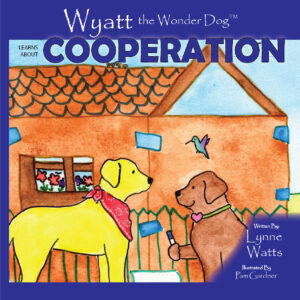Five Steps to Teach Kids to be Kind
We all want and expect others to be kind but exactly what is kindness, how is it developed, and why does it matter?
There are 5 steps to teaching kindness:
Define what kindness: Teach that kindness is being friendly, generous and considerate. Next teach that based on our environment, our family of origin, and our community, kindness might mean somewhat different things to different people. One individual might think that greeting someone with a hug is kind. Another might feel that it is more important to have personal space and to acknowledge others in a different way is kind. As adults we have to talk about and demonstrate different ways to be kind. Initially we teach the golden rule: We treat other people the way we would hope to be treated ourselves. Once they grasp the golden rule, you can move on to the Platinum Rule, which is that we treat people the way that’s best for them, even if that’s different from what’s best for us. This is a much trickier concept of course, even for adults. However, this is what we teach when we remind them that while you may enjoy wrestling and rough housing with your brother, not all your friends will find this enjoyable.
Tap into their imagination: Teaching empathy through helping children imagine what others are feeling, is the next step to teaching kindness. ” What do you think that feels like?” is a question child can answer in real life situations as well as when they are reading a book, watching a movie or acting out their own imaginative play.
Model Kindness: The best way to teach is always through actions not lectures or word. Find ways to demonstrate kindness is everyday situations.
Develop kind habits: Good manners aren’t just a positive way to build relationships, they are also good ways to show care and consideration to others. Saying saying please and thank you, sharing, cooperating, giving, including others, comforting, supporting, championing, listening without interrupting and noticing when someone could use help are all great habits that can be developed over time by helping kids get tuned in to the needs of others.
Acknowledge that being kind isn’t always easy: This is especially true when someone else is not being kind. A sibling is annoying. A friend is hurtful. A neighbor is rude. But even when kindness is not appreciated, there is benefit to the individual who is kind. They will feel better about themselves and they open the door to receive kindness in return. Everyone is challenged to be kind when others are not but it is important to help kids know that their kind actions ultimately lead to a kinder more supportive and compassionate world, even it it isn’t immediately true.
Wyatt the Wonder Dog Learns about Cooperation

Wyatt wants to play Frisbee. Max want to build a fort and Callie wants to have tea party. How do the three friends reconcile their differences? Can it be done? When Wyatt doesn’t get his way, Max’s mother suggests he be the Superhero for the day. Join Wyatt as he learns how the magic of cooperation and compromise can bring the five friends closer together.
